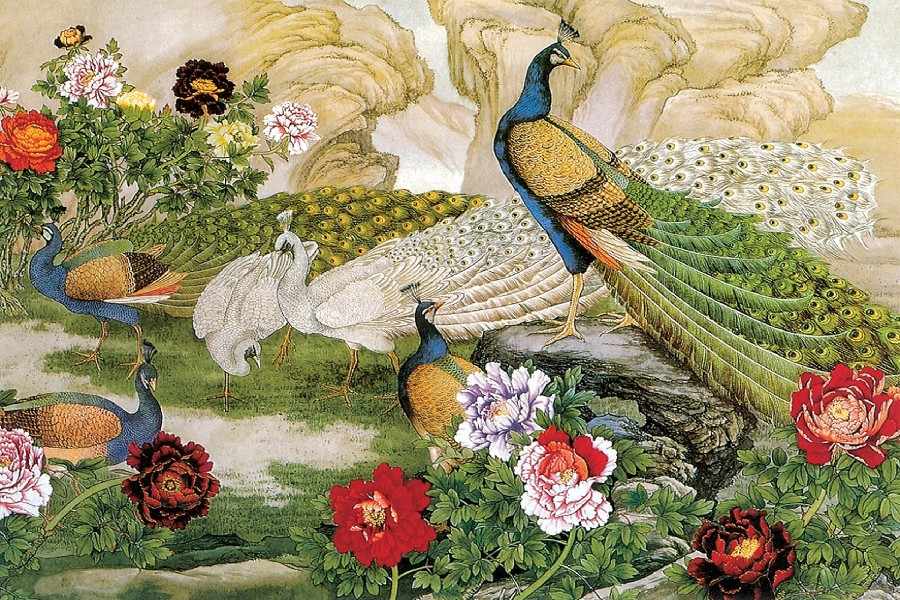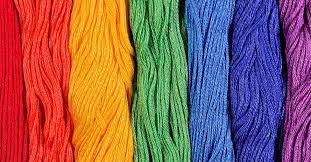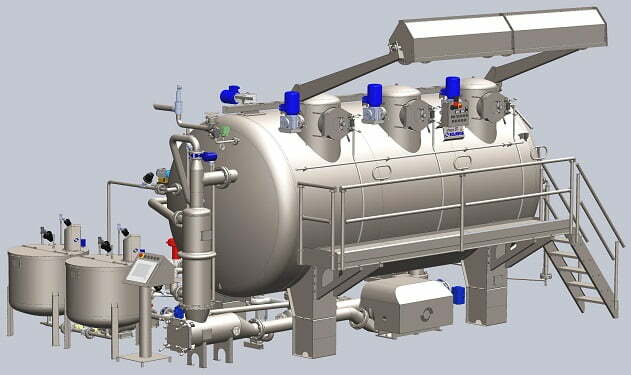The process of doing colouration on the specific area of the textile material (fabric) as per a pre-designed pattern. The main difference between dyeing and printing is, in case of printing, colour is applied to a localized area with desired patterns whereas, in the case of dyeing, it is applied to the entire textile. Or Textile printing is the art of design by mechanical and chemical application. It entails the localised dyeing with dyes & pigment with the aid of a binder and the design being created by different colour or motives. Or By the term “Textile printing” we mean the localised application of dyes or pigments and chemicals by any method which can produce a particular effect of colour on the fabric according to the design.
What is printing?
Ans: Textile printing is the process of applying colour to fabric in definite patterns or designs.
How printing mechanism performs on fabric?
Ans: In properly printed fabrics the colour is bonded with the fibre, so as to resist washing and friction.
Differentiate printing mechanism from dyeing mechanism.
Ans: Textile printing is related to dyeing but in dyeing properly the whole fabric is uniformly covered with one colour, whereas in printing one or more colours are applied to it in certain parts only, and in sharply defined patterns.
What are the basic printing methods?
- Direct printing.
- Resist printing.
- Discharge printing.
Describe the mechanism of direct printing.
Ans: In direct printing colorants containing dyes, thickeners, and the mordents or substances necessary for fixing the colour on the cloth are printed in the desired pattern.
How resist printing can be done?
Ans: In resist printing a wax or other substance is printed onto fabric which is subsequently dyed. The waxed areas do not accept the dye, leaving uncoloured patterns against a coloured ground.
What is discharge printing?
Ans: Discharge printing, also called Extract Printing, method of applying a design to dyed fabric by printing a colour-destroying agent, such as chlorine or hydrosulphite, to bleach out a white or light pattern on the darker coloured ground.
Describe the printing process flow in textiles.
Pre-treatment of fabric 🠊 Preparation of colours 🠊 Preparation of printing paste 🠊 Impression of paste on fabric using printing methods 🠊 Drying of fabric 🠊 Fixing the printing with steam or hot air (for pigments) 🠊 After process treatments
What can be the types of thickening agent in textile printing?
Ans: Typical thickening agents are starch derivatives, flour, gum Arabic, guar gum derivatives, tamarind, sodium alginate, sodium poly acrylate, gum Senegal and gum tragacanth, British gum or dextrin and albumen.
What thickening agents can be used for disperse printing?
Ans: Combinations of cold water-soluble carboxy methylated starch, guar gum and tamarind derivatives.
What type of thickening agents can be used for cotton printing with reactive dye, pigment and vat dye?
- Reactive Dye: Alginates
- Pigment: Sodium polyacrylates
- Vat Dye: Carboxymethylated starch
Most common printing process is__________.
Ans: Screen printing.
What types of screens are generally used for screen printing?
Ans: Rotary screen printing and flat (bed) screen printing.
How many colours can be used together for roller printing?
Ans: 14 colours
Which type of faults can be found generally on roller printing?
Ans: Shedding.
Which type of printing is mostly suitable for flat screen printing?
Ans: High pile fabrics.
Carpets can be printed by using ________.
Ans: Rotary screen printing.
What are the fixation methods after printing?
- Thermo-fixation
- Super-Heated Steaming
- High Pressure Steaming
What is the other name of digital textile printing?
Ans: Inkjet printing.
How inkjet printing can be done?
Ans: Inkjet printing on fabric can be done with an inkjet printer by using fabric sheets with a removable paper backing.
For which type of fabric disperse direct ink can be used in inkjet printing technology?
Ans: Polyester.
What type of ink can be used for nylon and silk fabric?
Ans: Acid ink.
Reactive ink can be used for ________.
Ans: cellulose based fibres such as cotton and linen.
Which type of printing is generally done for flags, banners and other point of sales applications?
Ans: Digital or inkjet printing.
How stencil printing can be done?
Ans: A pattern is cut from a sheet of stout paper or thin metal with a sharp-pointed knife, the uncut portions representing the part that will be left uncoloured. The sheet is laid on the fabric and colour is brushed through its interstices.
What type of printing can be done on decorative panels?
Ans: Lithographic printing.
In what portions of a garments generally pad printing can be done?
Ans: Garment tags and care labels.
In what type of dyes heat setting is not required?
Ans: Silk printing.
What is transfer printing?
Ans: Transfer printing is a method in which a monochrome print on paper is taken which is then transferred by pressing onto the fabric with the help of adequate heat.
What are the types of print paste transfer in transfer printing?
- Sublimation transfer
- Melt transfer
- Film release
- Wet transfer
What is sublimation transfer?
Ans: When the paper is heated the dye is preferentially adsorbed from the vapour phase by the textile material with which the heated paper is held in contact. This is commercially the most important of the transfer-printing methods.
What is burn out printing?
Ans: A method of printing to obtain a raised design on a sheer ground. The design is applied with a special chemical onto a fabric woven of pairs of threads of different fibres. One of the fibres is then destroyed locally by chemical action.
Is 100% Cotton fabric suitable for burn out printing?
Ans: No.
What type of fabrics are generally suitable for burn out printing?
Ans: Velvet, PC or CVC.
Which fibre is the victim in burn out printing technology?
Ans: Cotton.
Which composition is mostly suitable for burn out printing?
Ans: 60% polyester 40% cotton.
Process loss in burn out printing is _________.
Ans: More than 35%
How much is the cost of burn out printing/kg?
Ans: $4.5 to $5.0/kg.
After burn out printing the fabric of 160 to 170 GSM turn into ________.
Ans: 120 to 130 GSM.
What is the best construction for burn out printing?
Ans: Single jersey.
What is blotch printing?
Ans: A process wherein the background colour of a design is printed rather than dyed.
Describe duplex printing.
Ans: A method of printing a pattern on the face and the back of a fabric with equal clarity.
Give some example of printing techniques.
- Hand block printing
- Perrotine printing
- Engraved copperplate printing
- Roller, cylinder, or machine printing
- Stencil printing
- Screen printing
- Digital textile printing
- Flexo textile printing
- Discharge Printing
- Burn out printing
- Sublimation Printing
- Transfer Printing
Texpedi.com
Check out these related articles:









This post is really useful and helpful to know more about the things which you have shared. I appreciate you for such a great amount of information. I assure you this Compact Moisture Absorber would be beneficial for many people.